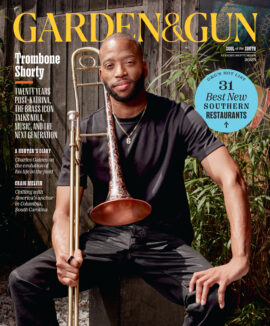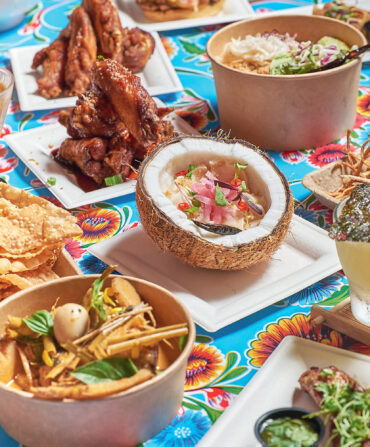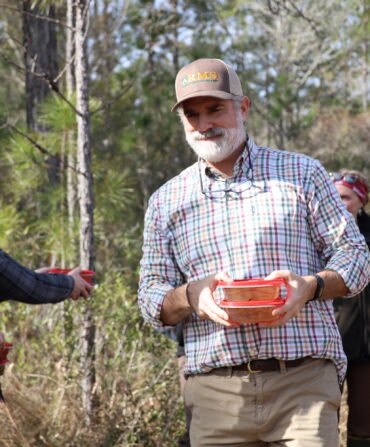Food & Drink
Exploring the Waffle House Archives: Seven Decades in Ten Objects
As the Southern icon turns seventy, a peek behind the yellow sign
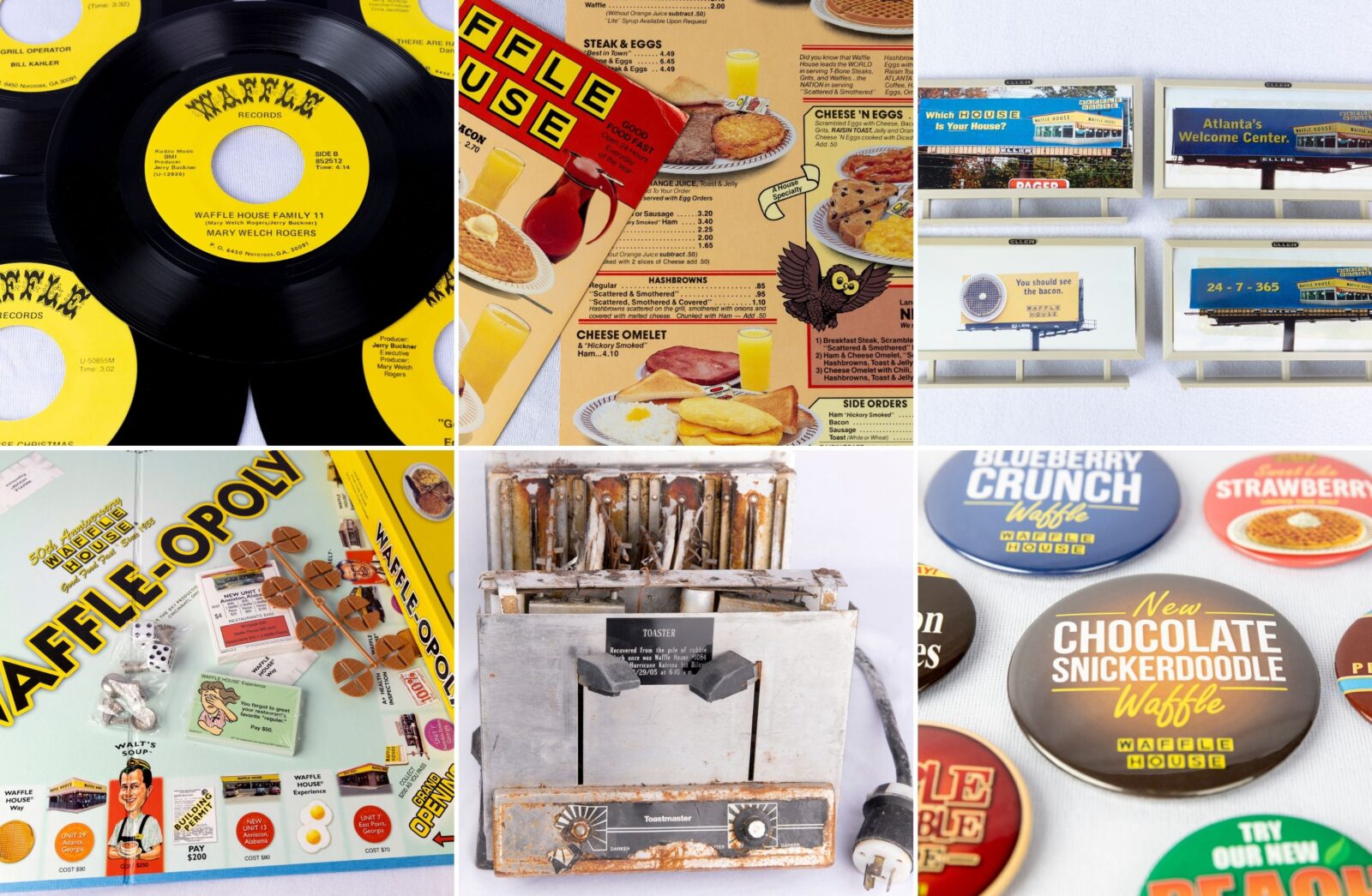
Photo: Kendrick Brinson
Tom Forkner and Joe Rogers Sr. were neighbors in Avondale Estates, Georgia, in 1955 when they decided their community needed a restaurant—and that they were going to build it together. They chose a location along a main commuter route and designed an eye-catching sign in school-bus yellow, and the rest, as they say, is history.
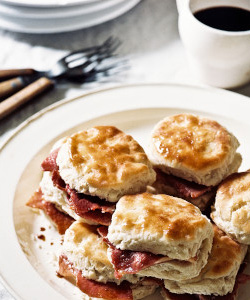
Much of that seventy-year history is on display at the Waffle House Museum, which opened in 2008 on the site of the original Waffle House, about seven miles from downtown Atlanta. Fans of the chain can drop by during the museum’s open houses, hosted four times a year, or make an appointment online for a free guided tour, offered most Wednesdays, to explore the recreated restaurant and collection. But on the ground floor of the Waffle House corporate office in Norcross, a suburb about fifteen miles north, there’s an even bigger trove of memorabilia: the Waffle House Archives.
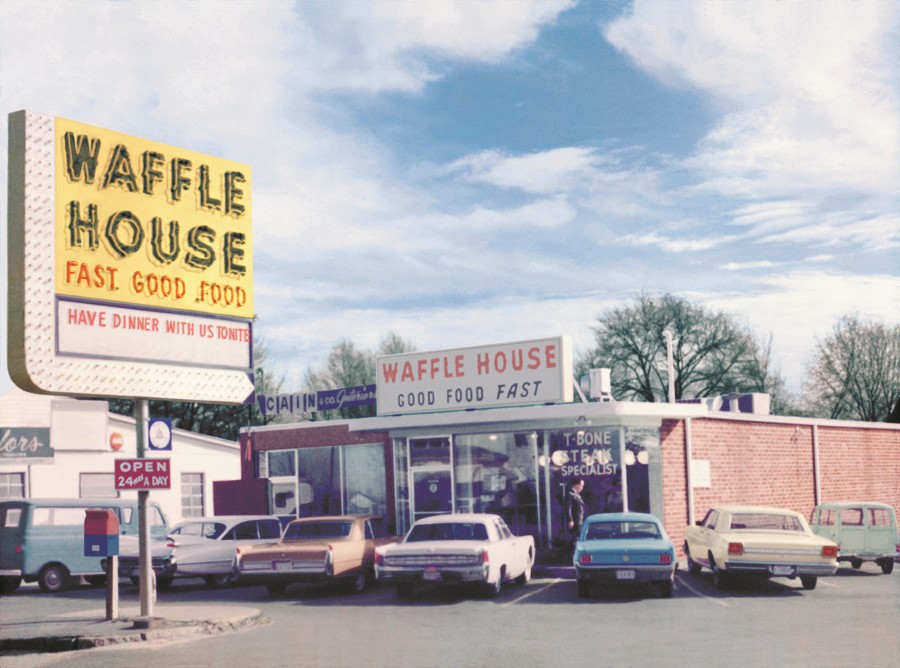
Photo: courtesy of Waffle House Archives
The first Waffle House, which opened in 1955 on East College Avenue near Decatur, Georgia, now operates as a museum.
From stock certificates and the key to Waffle House #2 (long since demolished) to dozens of uniforms and a branded racecar, each artifact in the archives tells part of the Waffle House story. In honor of the chain’s seventieth birthday, Garden & Gun has curated a selection of archival items from across the decades that bring the lore of this singular Southern institution to life.
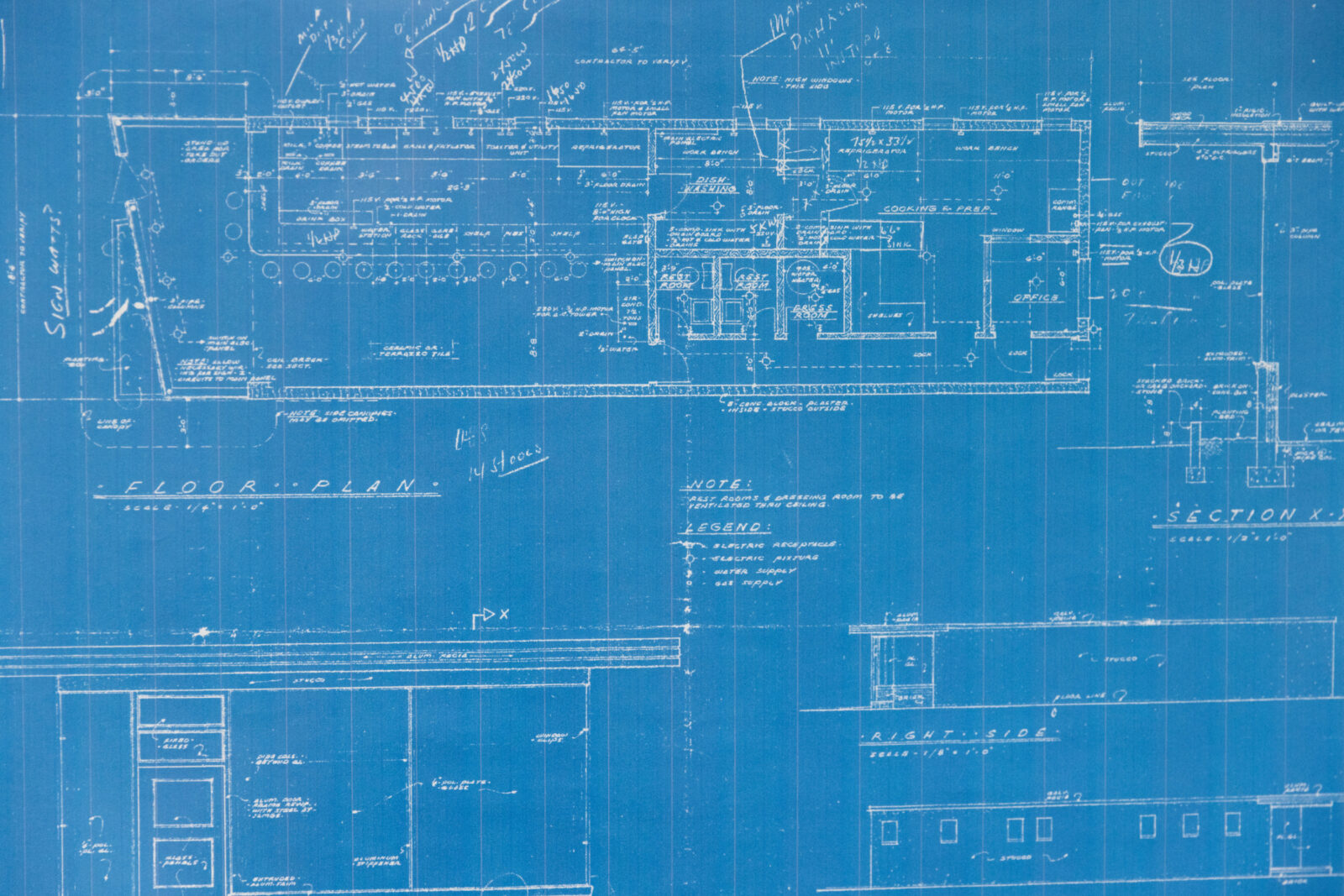
Photo: Kendrick Brinson
A Blueprint for Success
With several years of experience in the short-order restaurant world, Joe Rogers Sr. designed the layout of the first Waffle House—a long high counter with fourteen stools—to minimize traffic in the kitchen and maximize associates’ contact with diners. “We aren’t in the food business,” Rogers is quoted as saying on the Waffle House website. “We’re in the people business.” The original hand-drawn plan, dated Feb. 23, 1955, is on display in the Waffle House Museum, while a copy from the chain’s early years hangs in the corporate headquarters.
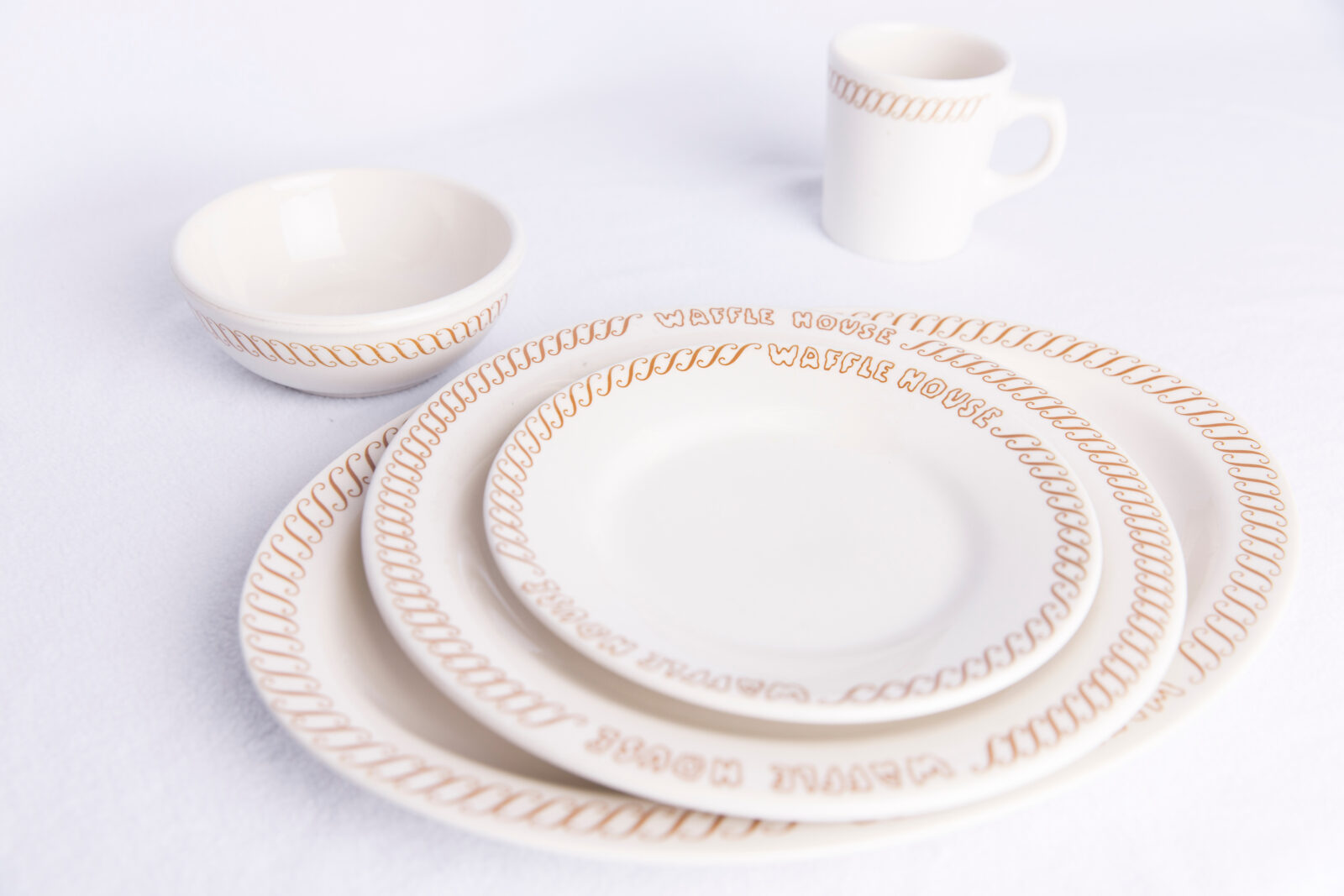
Photo: KENDRICK BRINSON
Setting the Table
By the early 1960s, Waffle House introduced booth seating and custom dishware featuring a wobbly Waffle House wordmark that resembled dripping syrup, also seen on early signage. This lettering and the crest-shaped logo were retired in favor of the iconic block-letter sign in 1969, although the plates remained in circulation for decades.
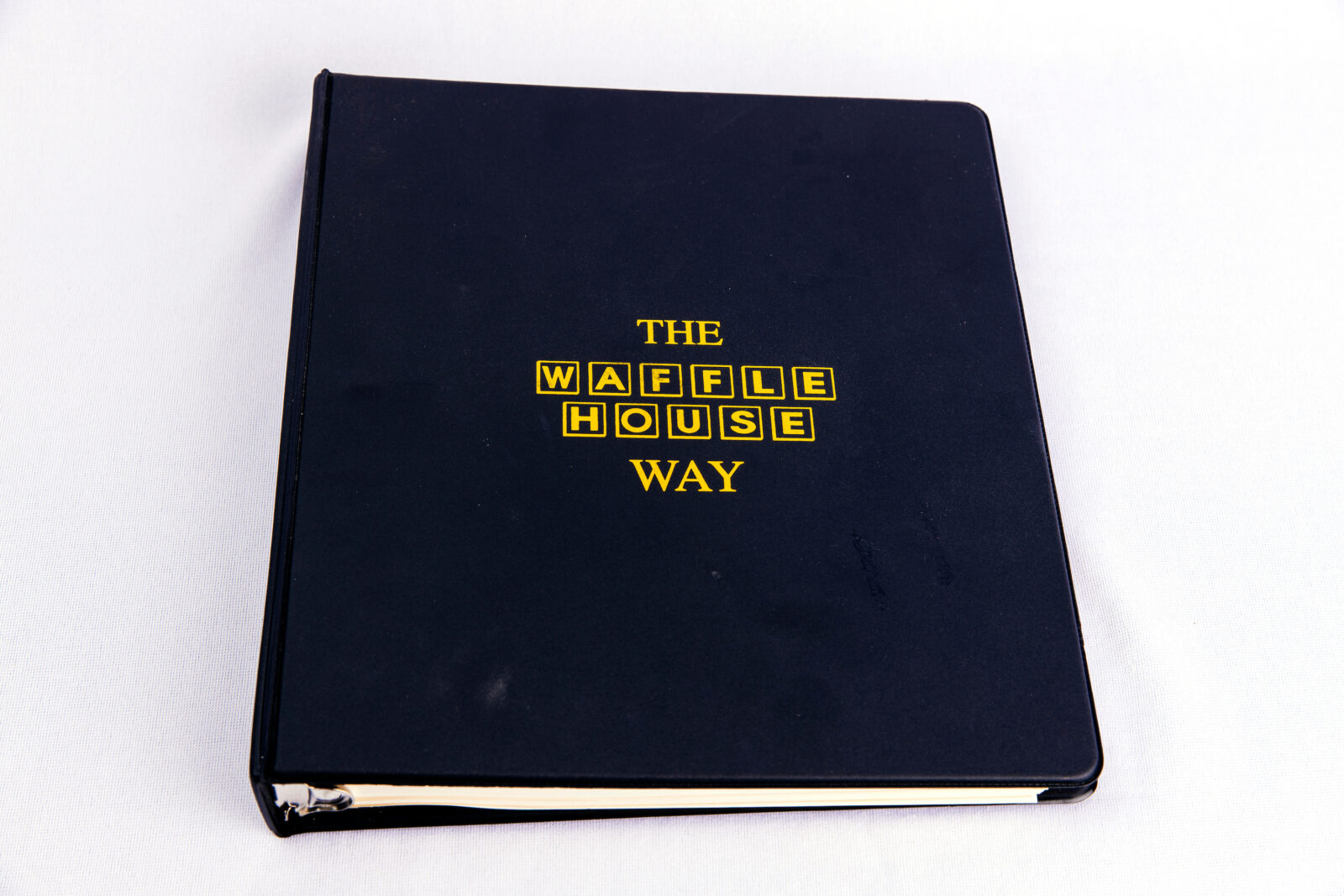
Photo: KENDRICK BRINSON
Documenting “the Waffle House Way”
In the 1970s, Waffle House expanded its footprint from four states to nineteen. To ensure a consistent customer experience across the chain, the company created The Waffle House Way, a hefty tome of standard procedures and hand-drawn diagrams detailing food prep and presentation as well as common mistakes. At about three hundred pages long, The Waffle House Way is still updated and distributed to associates across the system.
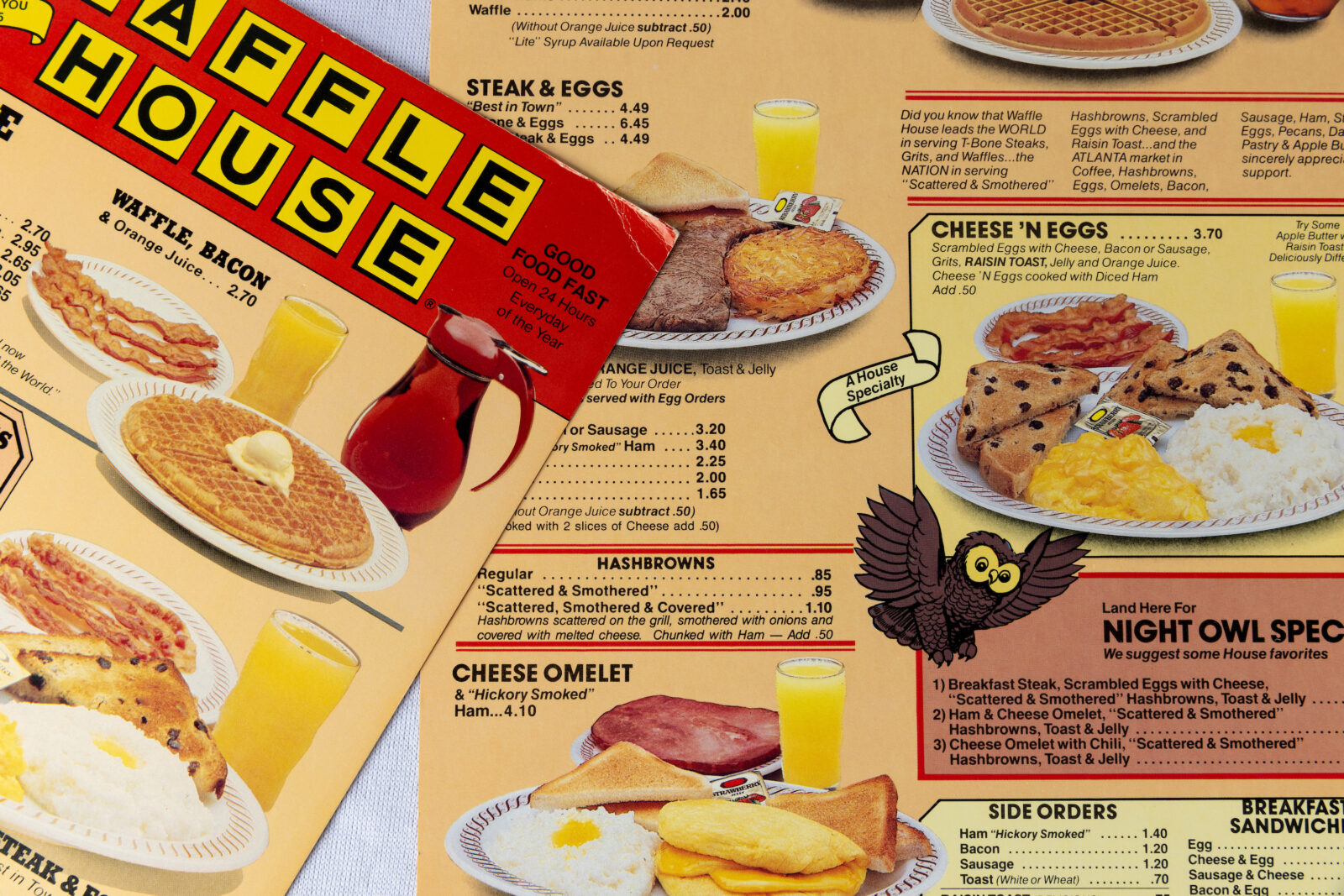
Photo: KENDRICK BRINSON
Starting a Hashbrown Evolution
Waffle House’s collection of menus traces the origins of countless signature dishes. A 1982 menu first paired Cheese ‘n’ Eggs with raisin toast, and in 1984, “scattered, smothered, and covered” hashbrowns, with onions and cheese, entered the WaHo lexicon. Since then, six more hashbrown toppings—ham (chunked), tomatoes (diced), jalapeños (peppered), mushrooms (capped), chili (topped), and sausage gravy (country)—and the adventurous “All the Way” preparation have been added to the menu.
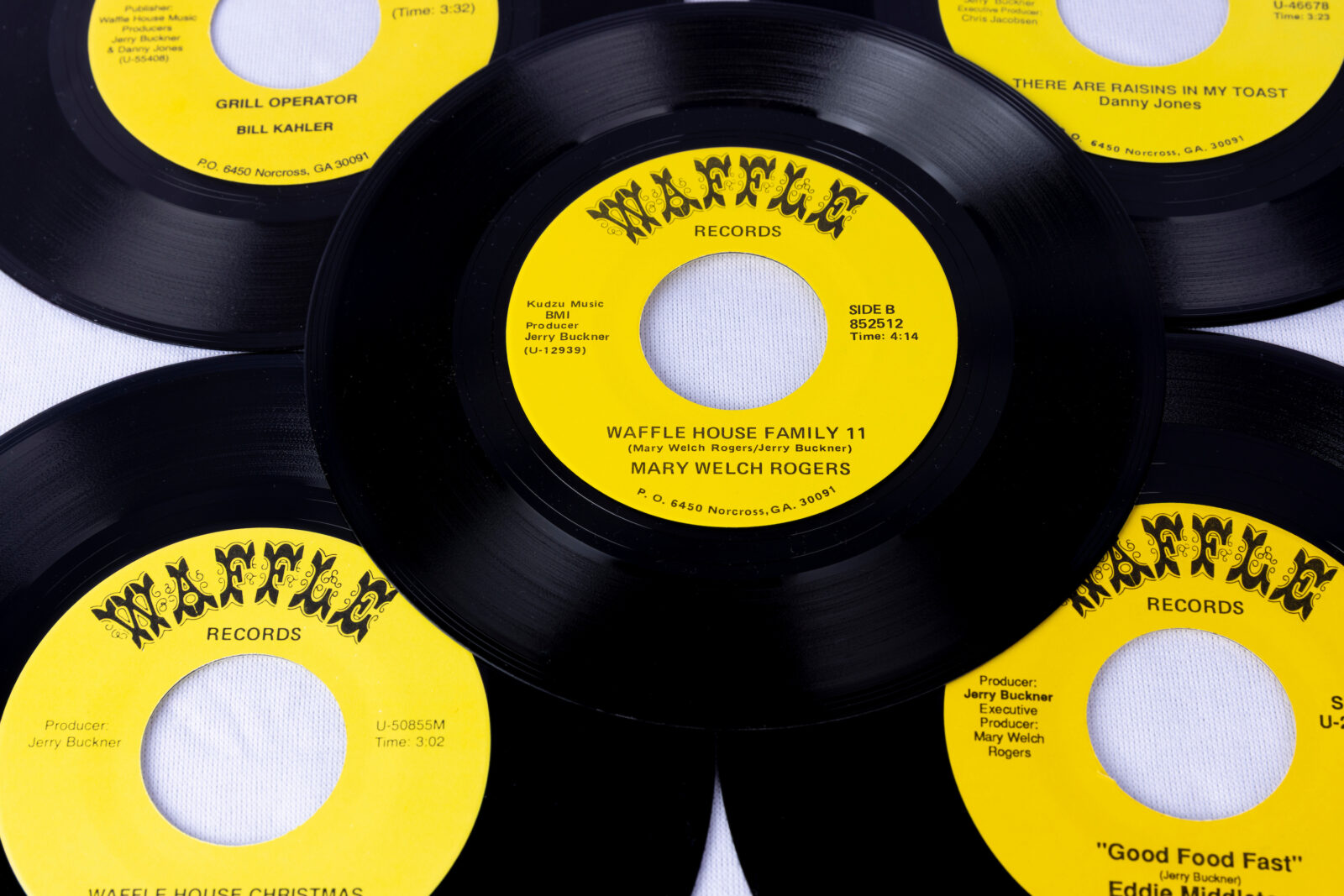
Photo: KENDRICK BRINSON
Now Playing: Waffle House Records
Also in 1984, “Waffle House Family Part I,” the first single from in-house label Waffle Records, hit restaurant jukeboxes. Part II would soon follow, another early entry in what has become a deep catalog of songs (including Christmastime originals) praising the restaurant, its food, and its people. In 2013 the chain replaced all of its analog jukeboxes with digital ones. “There Are Raisins in My Toast”—in the style of Frankie Valli and the Four Seasons—is a cult favorite, but don’t sleep on “Waffle House Steaks—A Bluegrass Tribute.”
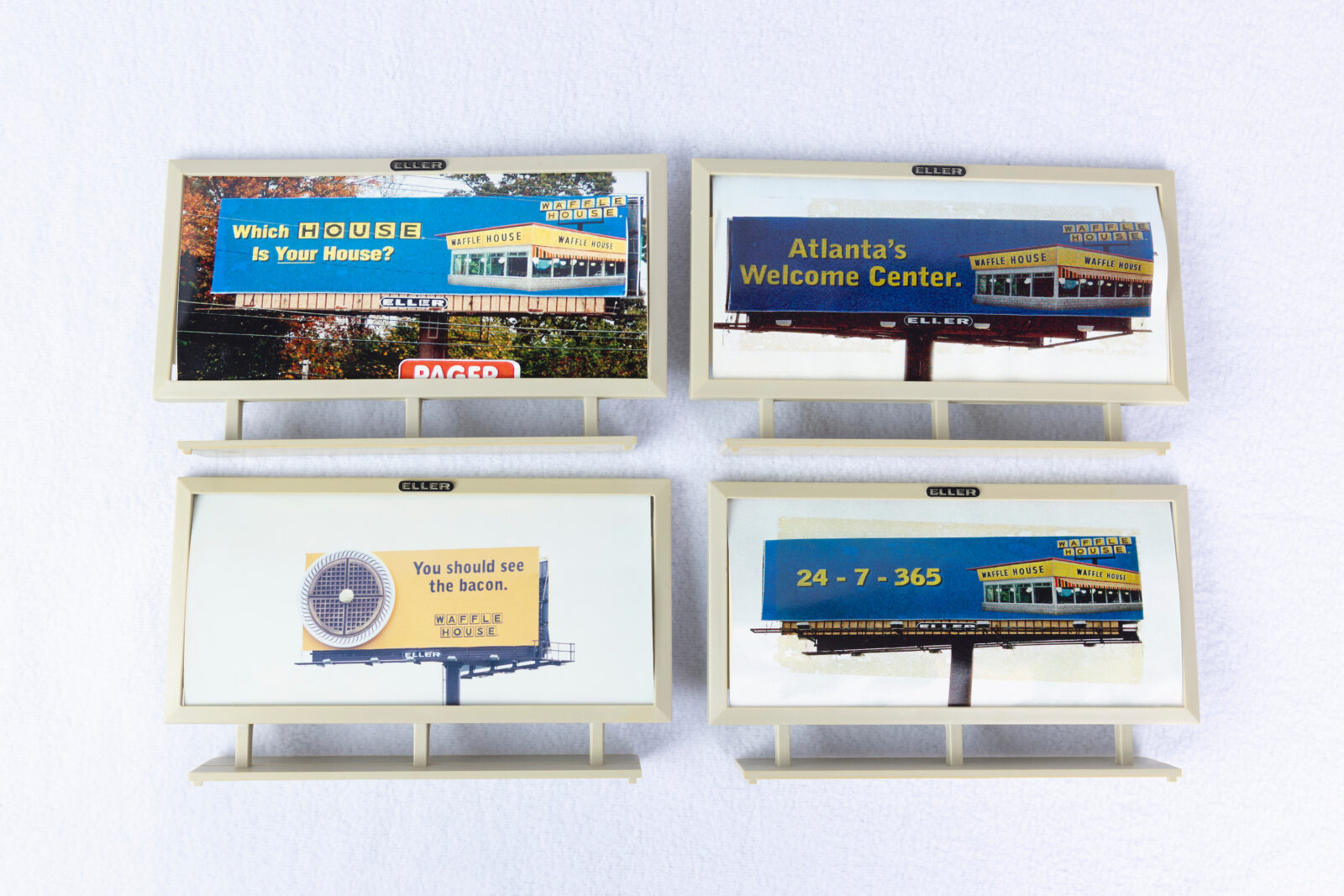
Photo: KENDRICK BRINSON
Marketing in Miniature
Outside of a few strategic collaborations, Waffle House typically hasn’t invested much in external marketing. With more than two thousand restaurants in twenty-five states today, sheer market presence does a lot of that work. These mini mockups are rare examples of billboards placed in some markets in the 1990s.
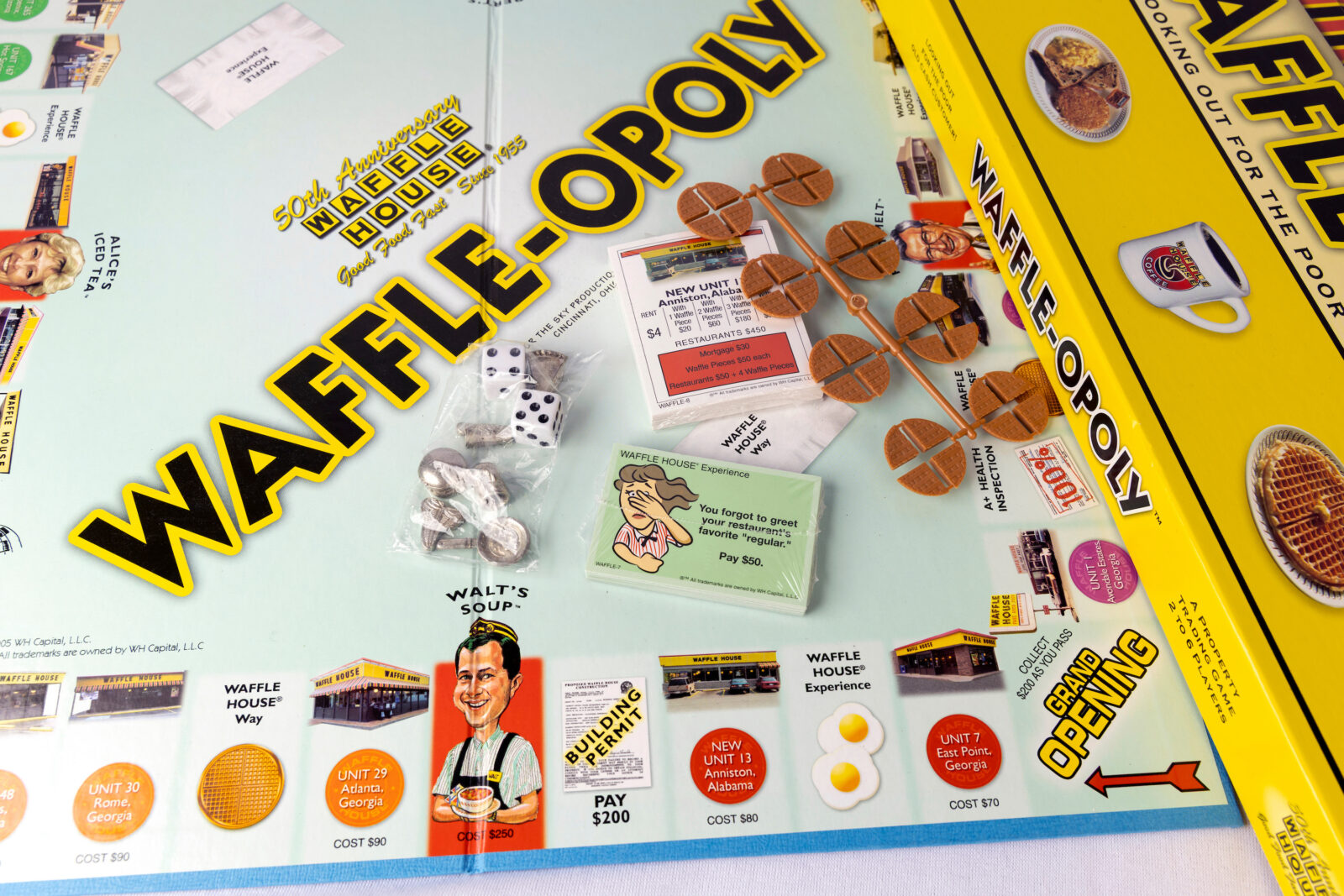
Photo: KENDRICK BRINSON
New Ways to Play with Food
This Waffle-Opoly board game, created to commemorate the chain’s fiftieth anniversary in 2005, features specific units as properties; a trip to the corporate office in lieu of going to jail; and a frying pan, T-bone steak, cheeseburger, pie, iced tea, and coffee mug as tokens. But Waffle-Opoly wasn’t the chain’s first foray into tabletop games: The archives also hold a game board for Waffle Wisdom, a Candyland-style game published by the Waffle House Training Department in 1985.
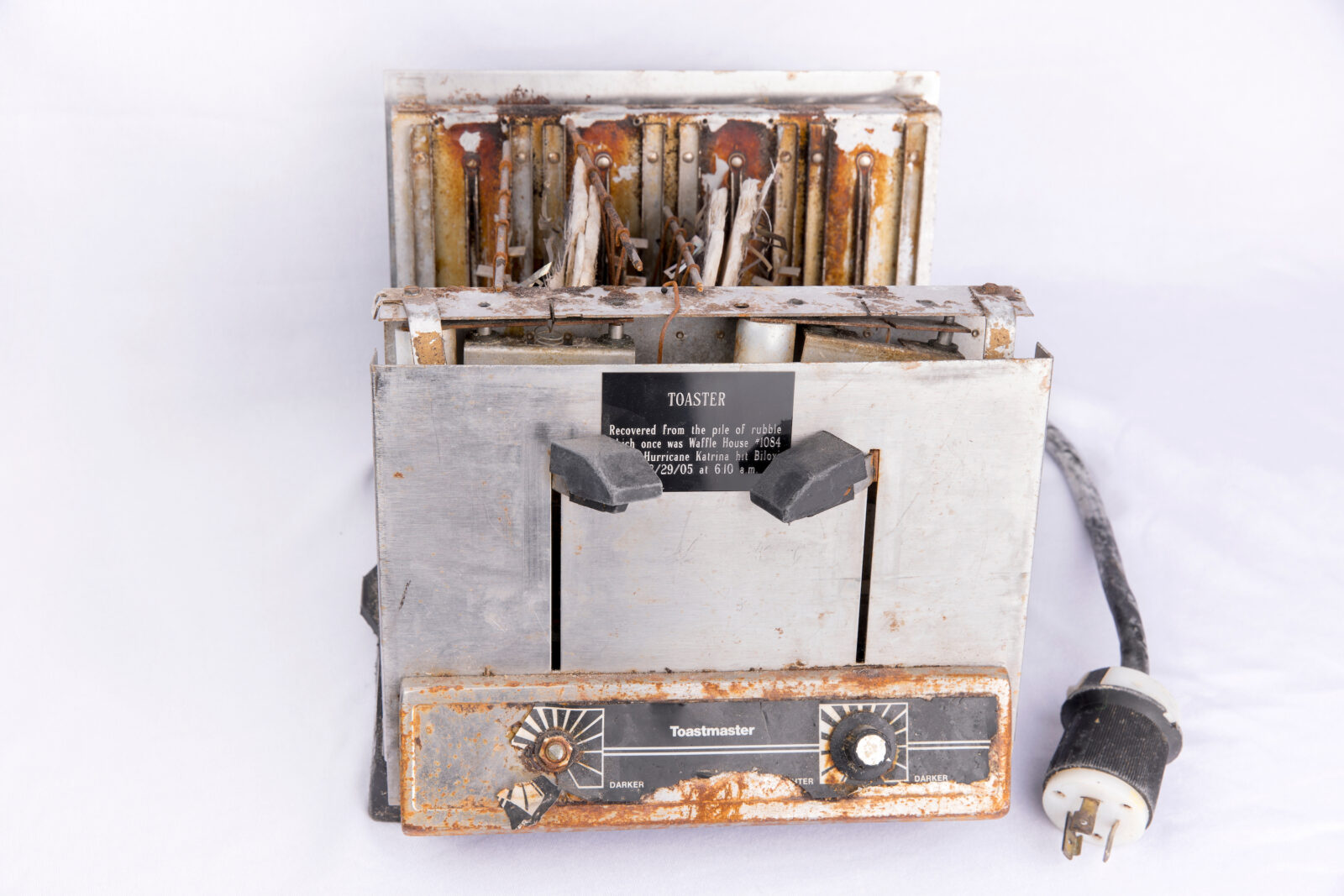
Photo: KENDRICK BRINSON
A Symbol of Strength in the Storm
This toaster was recovered from the rubble of Waffle House #1084 in Biloxi, Mississippi, after Hurricane Katrina struck in August 2005. The unit was one of eight completely destroyed by the storm and was eventually rebuilt. In the years since Katrina, Waffle House has gained international renown for its storm and emergency response protocols and the so-called Waffle House Index, which gauges the severity of a weather event based on if and how local Waffle Houses are operating.
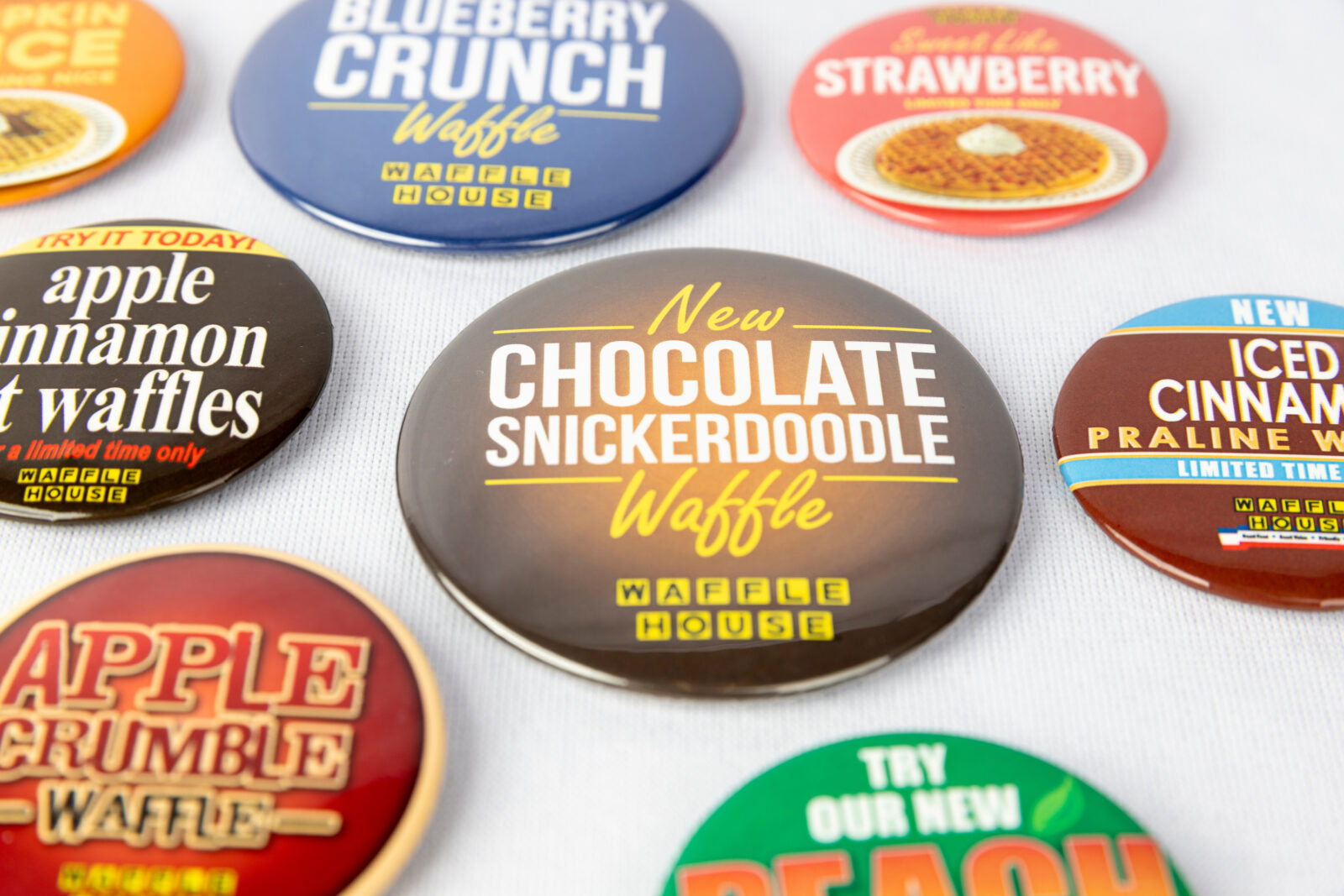
Photo: KENDRICK BRINSON
Promotion with Flair
Waffle House associates adorn their aprons, visors, hats, and even nametags with buttons and pins celebrating years of service, holidays, vendor partners, and of course, the food. These buttons promote the seasonal waffles that have appeared on the menu since the chain began experimenting with flavors and toppings in the early 2010s. For the chain’s seventieth anniversary, the restaurant is offering a limited-time-only birthday cake waffle.
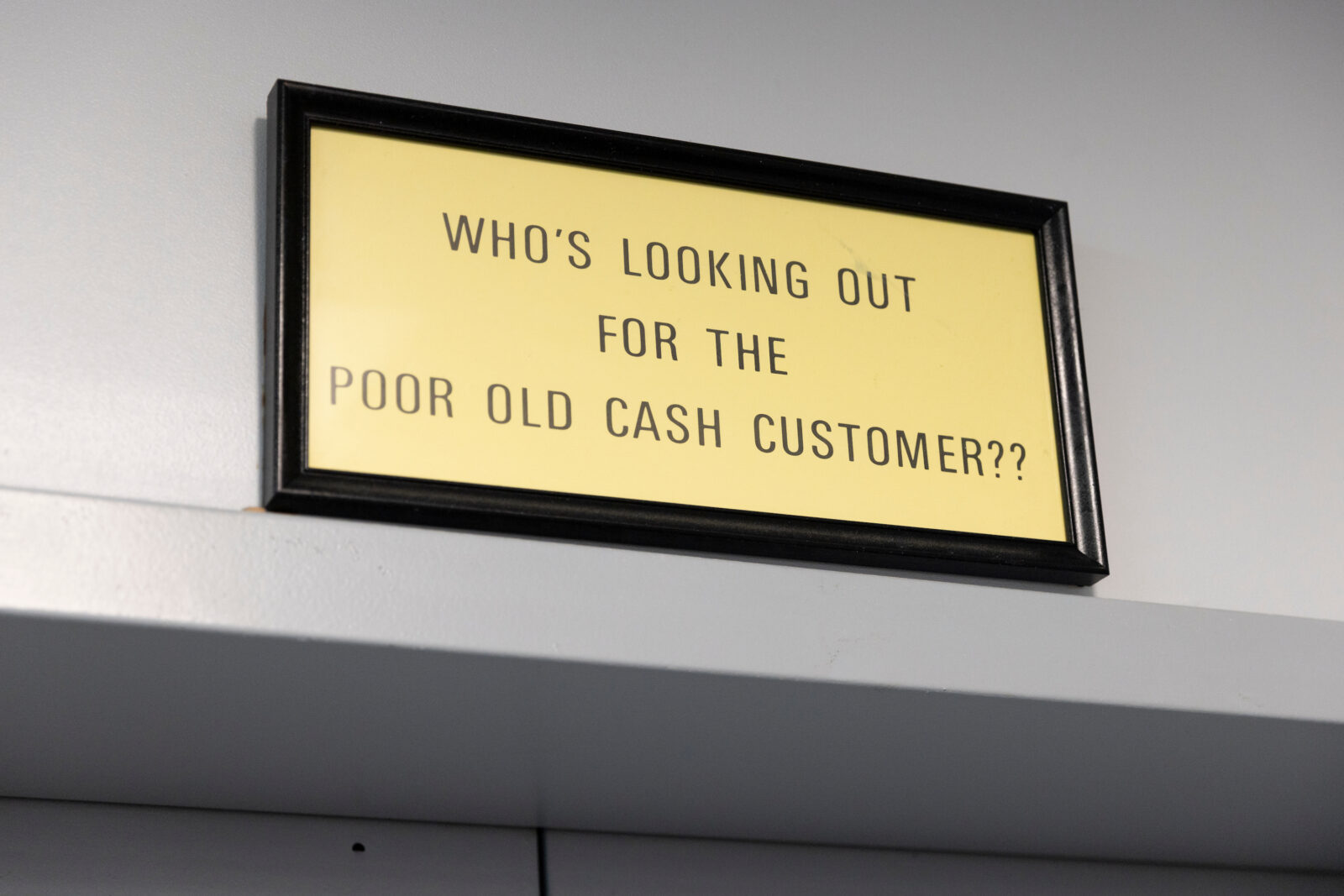
Photo: KENDRICK BRINSON
Words to Build a Business On
“Who’s looking out for the poor old cash customer?” was a favorite adage of Waffle House founders Tom Forkner and Joe Rogers Sr., who grew up during the Great Depression. In fact, Waffle House served only cash customers until 2006, when the chain started accepting credit cards. But the founders’ rhetorical question is bigger than cash versus credit. It underscores that all are welcome at Waffle House and speaks to the chain’s emphasis on friendly, personalized service.
Employees at the Waffle House corporate office encounter this slogan several times a day. It features in a wall-sized grid of sixty motivational mottos; it hangs in a frame above the elevator; it’s the title of Rogers’s 2000 autobiography and the subtitle on the Waffle-Opoly box. Perhaps most significantly, it’s seen on a commemorative plaque that reads: “Waffle House Office Complex dedicated with appreciation to ‘the poor old cash customer,’ who made it all possible.”

